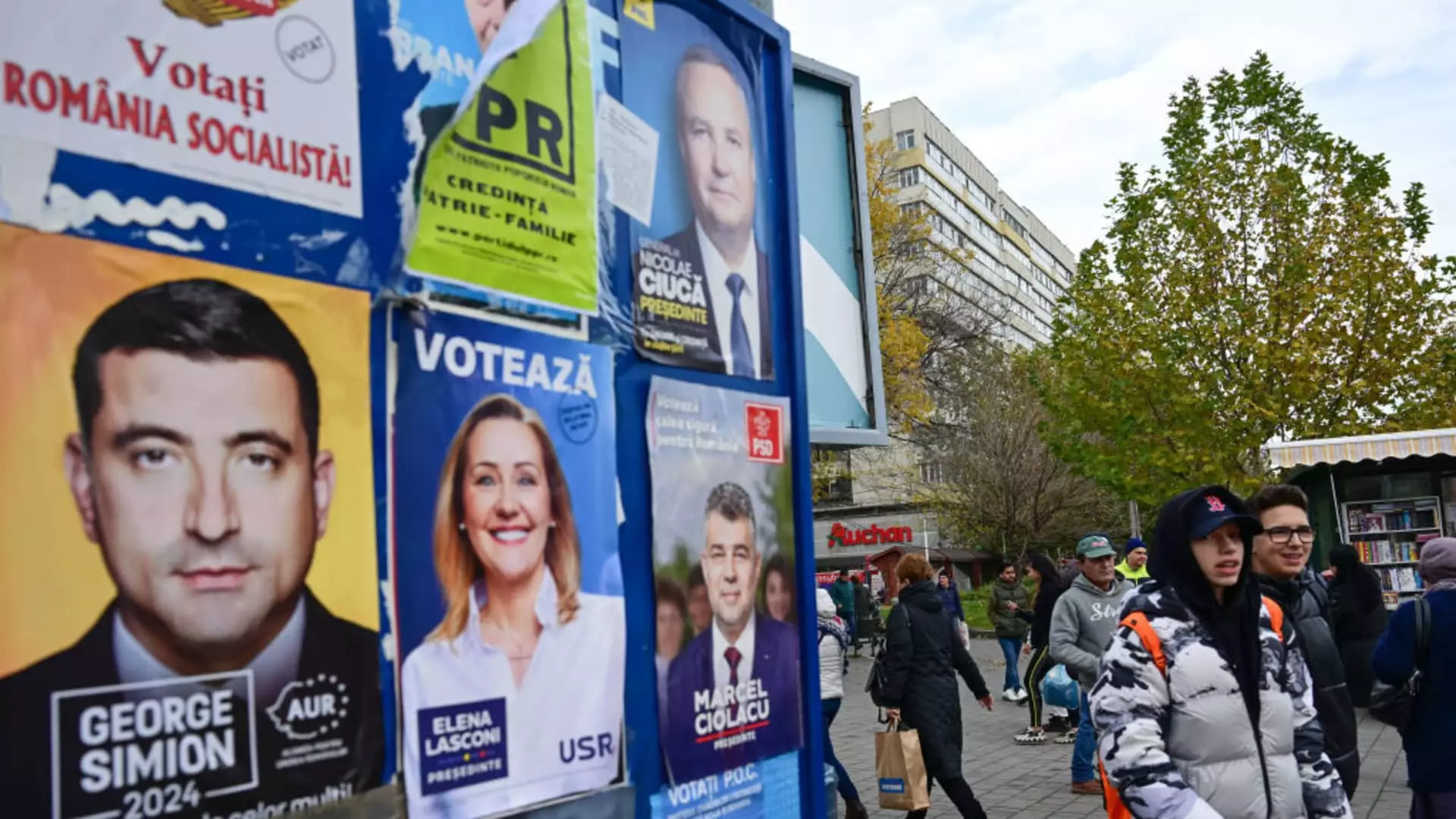The recent presidential election in Romania has unveiled a dramatic shift in the political landscape, characterized by the emergence of far-right candidates and the surprising performance of lesser-known figures. Calin Georgescu, an independent candidate with a pro-Russian stance, has captured a noteworthy 22.94% of the votes in the first round, pulling ahead of established political figures in a deeply divided electorate.
Georgescu’s commanding lead has raised eyebrows, particularly as pre-election forecasts suggested he would struggle to break past single digits. His campaign, which heavily utilized social media platforms like TikTok, resonated with a segment of the population disenchanted with traditional political establishments. His ultranationalist rhetoric, which explicitly opposes military support for Ukraine, seems to have struck a chord amidst the broader societal discontent.
In a temporal juxtaposition, the second place was claimed by Elena Lasconi, the head of the opposition center-right Union Save Romania (USR) party, garnering 19.17% of the vote. Lasconi’s candidacy represents a contrast to Georgescu’s far-right leanings, as she is a staunch advocate for EU integration, NATO alliances, and military assistance for Ukraine. Such a polarizing electoral field suggests a growing ideological divide within the Romanian electorate, which may have broader implications for the country’s future position in both the European and global arenas.
The Social Democrat Party’s Fall from Grace
A particularly striking development from this election cycle is the Social Democrat Party’s (PSD) struggle to maintain relevance. Party leader Marcel Ciolacu narrowly missing out on the runoff with a mere 19.16% of votes is particularly notable, signifying a definitive departure from an era where the PSD routinely appeared as a dominant force in Romanian politics. This marks the first time since 1989 that PSD will not be present in a presidential runoff, a dramatic shift reflective of the electorate’s growing fatigue with traditional leftist policies and possibly a waning trust in established institutions.
This shift in political sentiment was further amplified by George Simion, leader of the far-right Alliance for Uniting Romanians (AUR), who secured 13.87% of the vote. The burgeoning popularity of nationalist, anti-establishment candidates signifies a fundamental restructuration of Romanian political demographics as voters gravitate towards more radical perspectives.
The runoff set for December 8 poses not only a challenge but also an opportunity for candidates to rally not only their own factions but also disenchanted voters from other parties. Lasconi’s platform includes support for civil unions for same-sex couples and an aggressive anti-corruption agenda, contrasting starkly with Georgescu’s ultranationalist views. This dichotomy sets the stage for a significant confrontation not only of policy but also ideologies that could profoundly affect Romania’s direction.
With a voter turnout of 52.55%, the election has been a critical reminder of the active engagement of the electorate amid growing global uncertainties. The implications of these electoral shifts extend beyond domestic politics, potentially influencing Romania’s role within the European Union and its relationships with neighboring nations.
As the electoral drama unfolds, all eyes will remain on the upcoming runoff, where not only the fate of Romania’s presidency lies in balance but perhaps the very character of its political future.


Leave a Reply